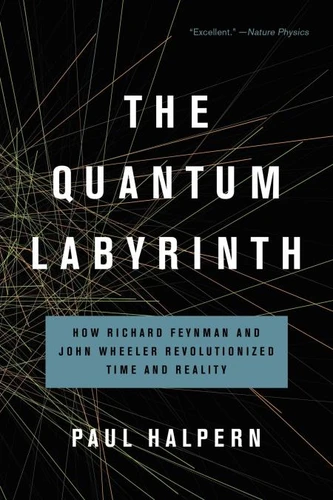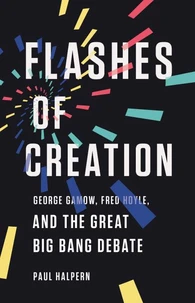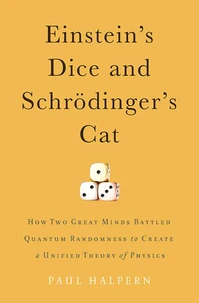The Quantum Labyrinth. How Richard Feynman and John Wheeler Revolutionized Time and Reality
Par :Formats :
Disponible dans votre compte client Decitre ou Furet du Nord dès validation de votre commande. Le format ePub protégé est :
- Compatible avec une lecture sur My Vivlio (smartphone, tablette, ordinateur)
- Compatible avec une lecture sur liseuses Vivlio
- Pour les liseuses autres que Vivlio, vous devez utiliser le logiciel Adobe Digital Edition. Non compatible avec la lecture sur les liseuses Kindle, Remarkable et Sony
- Non compatible avec un achat hors France métropolitaine
 , qui est-ce ?
, qui est-ce ?Notre partenaire de plateforme de lecture numérique où vous retrouverez l'ensemble de vos ebooks gratuitement
Pour en savoir plus sur nos ebooks, consultez notre aide en ligne ici
- Nombre de pages336
- FormatePub
- ISBN978-0-465-09759-3
- EAN9780465097593
- Date de parution16/10/2017
- Protection num.Adobe DRM
- Infos supplémentairesepub
- ÉditeurBasic Books
Résumé
The story of the unlikely friendship between the two physicists who fundamentally recast the notion of time and history In 1939, Richard Feynman, a brilliant graduate of MIT, arrived in John Wheeler's Princeton office to report for duty as his teaching assistant. A lifelong friendship and enormously productive collaboration was born, despite sharp differences in personality. The soft-spoken Wheeler, though conservative in appearance, was a raging nonconformist full of wild ideas about the universe.
The boisterous Feynman was a cautious physicist who believed only what could be tested. Yet they were complementary spirits. Their collaboration led to a complete rethinking of the nature of time and reality. It enabled Feynman to show how quantum reality is a combination of alternative, contradictory possibilities, and inspired Wheeler to develop his landmark concept of wormholes, portals to the future and past.
Together, Feynman and Wheeler made sure that quantum physics would never be the same again.
The boisterous Feynman was a cautious physicist who believed only what could be tested. Yet they were complementary spirits. Their collaboration led to a complete rethinking of the nature of time and reality. It enabled Feynman to show how quantum reality is a combination of alternative, contradictory possibilities, and inspired Wheeler to develop his landmark concept of wormholes, portals to the future and past.
Together, Feynman and Wheeler made sure that quantum physics would never be the same again.
The story of the unlikely friendship between the two physicists who fundamentally recast the notion of time and history In 1939, Richard Feynman, a brilliant graduate of MIT, arrived in John Wheeler's Princeton office to report for duty as his teaching assistant. A lifelong friendship and enormously productive collaboration was born, despite sharp differences in personality. The soft-spoken Wheeler, though conservative in appearance, was a raging nonconformist full of wild ideas about the universe.
The boisterous Feynman was a cautious physicist who believed only what could be tested. Yet they were complementary spirits. Their collaboration led to a complete rethinking of the nature of time and reality. It enabled Feynman to show how quantum reality is a combination of alternative, contradictory possibilities, and inspired Wheeler to develop his landmark concept of wormholes, portals to the future and past.
Together, Feynman and Wheeler made sure that quantum physics would never be the same again.
The boisterous Feynman was a cautious physicist who believed only what could be tested. Yet they were complementary spirits. Their collaboration led to a complete rethinking of the nature of time and reality. It enabled Feynman to show how quantum reality is a combination of alternative, contradictory possibilities, and inspired Wheeler to develop his landmark concept of wormholes, portals to the future and past.
Together, Feynman and Wheeler made sure that quantum physics would never be the same again.








